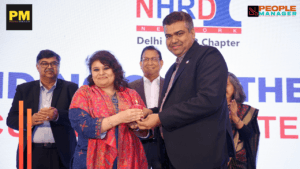How this HRTech startup reduces attrition by monitoring unofficial chatter among employees
The HRTech uses natural language processing (NLP) and artificial intelligence (AI) to examine unlawful employee communications. During this procedure, the startup computes three essential indices: overall cultural health, toxicity, and anticipating attrition.

How this HRTech startup reduces attrition by monitoring unofficial chatter among employees and found a relevance track records
Attrition is the most difficult obstacle for HR leaders to overcome in order to achieve Ideal in industry. However, while a ten percent attrition rate is regarded optimal for firms, there are some that have an attrition rate of less than three percent, which is outstanding in the industry.
Furthermore, it is challenging for HR leaders to determine the true cause of attrition in the sector. If the reasons are established, the facilitation of appropriate countermeasures is the next task.
A Gurugram-based start-up has devised a creative answer to usual concerns that lead to turnover, such as general culture and toxicity, in the midst of employers’ ongoing efforts to increase employee retention and create happy work environments.
CultureOS, a HRTech SaaS business, offers an internal social network to assist companies with predictive attrition research. Employees can utilize this platform to express themselves on company-related issues while staying entirely anonymous.
According to Business Today, the business uses natural language processing (NLP) and artificial intelligence (AI) to examine unlawful employee communications. During this procedure, the startup computes three essential indices: overall cultural health, toxicity, and anticipating attrition.
The start-up, founded earlier this year by Mohit Tripathi and Nilanjan Maiti, has already received angel money. Mohit Tripathi has worked with SmartQ, O4S, and Qdesq, while Nilanjan Maiti has worked with Kindle VC, Wedyut, and vakilsearch.
“The notable phenomenon of the’Great Resignation‘ observed in 2020 piqued our interest in conducting a thorough analysis of the determinants of employee retention within organizations,” Tripathi stated, according to BT.
“We created a platform that allows employees to express themselves freely and anonymously without fear of being identified.” Furthermore, our technology allows for real-time evaluation of organizational culture, allowing businesses to solve issues before they spiral out of control,” he said.
By promoting active employee engagement, the startup hopes to democratize the process of culture development within firms. It is now working with three organizations and is in advanced talks with three more significant clients, each with a workforce of more than 1,000 workers.
Employers receive complete information on a biweekly and monthly basis, in addition to giving a forum for workers to openly voice their thoughts. These studies provide useful insights into employee concerns and trends, allowing businesses to develop policies and initiatives to improve retention rates.
While businesses profit from CultureOS’s analysis, the start-up makes income through a standard SaaS leasing model. They demand a monthly fee for each user. In addition, the startup provides value-added services including advising, training, and coaching, which contribute to its income sources.
“Our current operational framework is based on a traditional enterprise Software as a Service (SaaS) model, with per-user, per-month pricing for our corporate clients.” However, as part of our future endeavors, we hope to explore alternate revenue streams through adding value to our clients,” stated Tripathi.
While businesses profit from CultureOS’s analysis, the start-up makes income through a standard SaaS leasing model. They demand a monthly fee for each user. In addition, the startup provides value-added services including advising, training, and coaching, which contribute to its income sources.
“Our current operational framework is based on a traditional enterprise Software as a Service (SaaS) model, with per-user, per-month pricing for our corporate clients.” However, as part of our future endeavors, we hope to explore alternate revenue streams through adding value to our clients,” stated Tripathi.
- Vikram Solar Appoints Arun Mittal to Lead its Energy Storage Arm - December 3, 2025
- Preventive Healthcare Emerges as a Strategic Investment | Howden Global Employee Benefits Report - November 18, 2025
- Apollo Tyres Ltd and KIIT Announce India’s First Strategic Academic Collaboration - November 18, 2025









